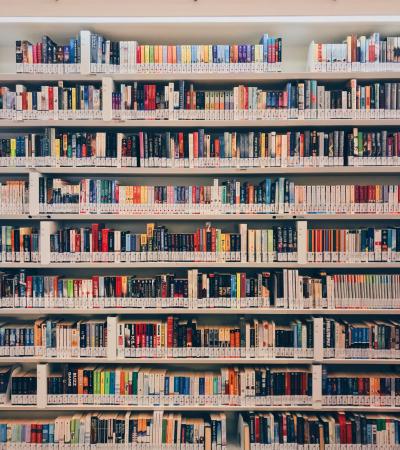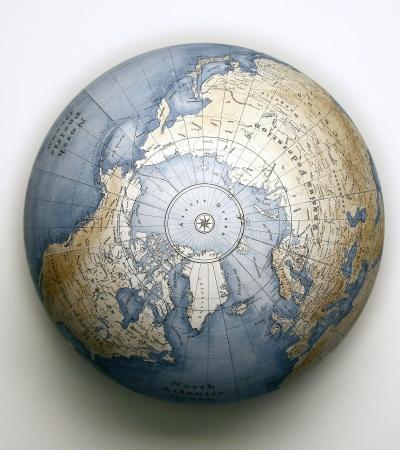Library programs and events are things we do not only because we enjoy doing them, but because they fulfill a need in our community. I have, however, oftentimes heard a disgruntled colleague or two claim that programs do little to encourage the use of the library. This, of course, is a matter of philosophical debate in the profession and is not likely to be resolved anytime soon. I would argue — as, I suspect, would many of you — that programs are use of the library.

In education there are different learning styles, such as visual, auditory and kinesthetic. Likewise, individuals who come to the library can seek out their intellectual or recreational pursuits as they see fit and in a fashion they find most accessible to them. The manner in which they pursue them makes no difference to me. In my mind, the access to and delivery of information is just as much a part of programming as it is a part of collection development. Nevertheless, when a colleague throws down a gauntlet, I am likely to pick it up. So I ventured to create a program highlighting a portion of our collection and expand its appeal to the wider community.
Fortunately for me, events had conspired in my favor. Several months prior to these spurious allegations, we had added a large number of Hindi language DVDs to our collection. This was not just because we love Hindi movies (and we do love Hindi movies). No, it was also because our community demographics had gradually changed over the last several years and, as any good library would, we endeavored to add collections to suit the needs of our ever-changing population. We were also fortunate enough to have a few staff members who were quite familiar with this particular area of the collection and were eager to select titles to add. Unfortunately, there were very few places to purchase these titles locally.
Where is the best place for Hindi movies? Why India, of course. Disappointingly, our director put the kibosh on our plans to take an all-expenses-paid trip halfway around the world. So we settled for a place a little more budgetarily convenient. With purchase orders in hand and a carload of staff, we drove to our local Little India and loaded up on DVDs and samosas (sweet, sweet, delicious carbs). It was in this carb-infused state that I thought we should create a program to promote the new collection to the broader community. I mean, if I was having such a good time, why shouldn’t others? My question was: how could we encapsulate the sense of wonder that the typical contemporary Bollywood film provides with their heart-pumping dance numbers, enchanting soundtracks and flamboyant sets?
Before I go on, I should make it clear that Bollywood is the colloquial term for the Hindi language film industry, based in Mumbai, India. Bollywood is a subset of the much larger Indian film industry and spans a vast period, from the black-and-white years to the contemporary digital age. The word Bollywood is a blend of Hollywood and Bombay. For those who desire more information on this fascinating cinematic history, you may wish to consult this concise and accessible tome: "Bollywood: A Guidebook to Popular Hindi Cinema" (Routledge Film Guidebooks) 2nd Edition by Tejaswini Ganti.
So I met with the small group of staff members and we developed a program to draw attention to our newly acquired Bollywood film collection. We called our program “Invitation to Bollywood.” The program included a brief overview of the Bollywood industry and the major milestones in its development. This introduction was written and delivered by our reference staff, who spent considerable time researching the topic. As engaging as our librarians can be, we needed a little more stimulation, so next we moved to a 30-minute video homage to the major Bollywood films in chronological order with titles and dates. Patrons were able to watch a progressive series of clips demonstrating film milestones, which were mentioned in the introduction. As you may or may not know, Bollywood dance numbers can be quite long, so carefully editing them to fit into 30 minutes was no small feat. We took a small break and presented attendees with a small buffet of Indian treats, including samosas, pakoras, chakli, sev and Masala chai. All food items were locally purchased from community vendors, and the chai was made on the premises by staff. We even had library card registrations and samples of the film collection to check out.
The final act of the program included live dancers from our local community college who had studied Bollywood style dance the previous semester. The fee for hosting them was nominal because the students really wanted the chance to demonstrate their skills and the instructor wanted the opportunity to promote their classes. The performance was no amateur hour; these individuals could actually dance, and they put on an incredible show. In fact, the audience started swaying back and forth with the music. Before we knew it, the dancers had invited patrons on stage to dance with them. In a few minutes, we had our own Bollywood-style ending.
Not all programs have to do with our collections, and every part of our collection does not naturally lend itself to programming. In the Venn diagram of library services, it is possible to have the two meet successfully. "Invitation to Bollywood" became a model for future programs and demonstrated an effective way to introduce part of our collections to a wide range of patrons who might never experience them otherwise. Staff had the chance to share their expertise and celebrate their passions. By partnering with our local community college and businesses, we were able to bring this broadly appealin,g worldwide phenomenon to our library and give it a local homegrown flavor.
Oh, and by the way, I got to eat all the samosas I could. Which, it turns out, is not many. Those things are surprisingly filling!



